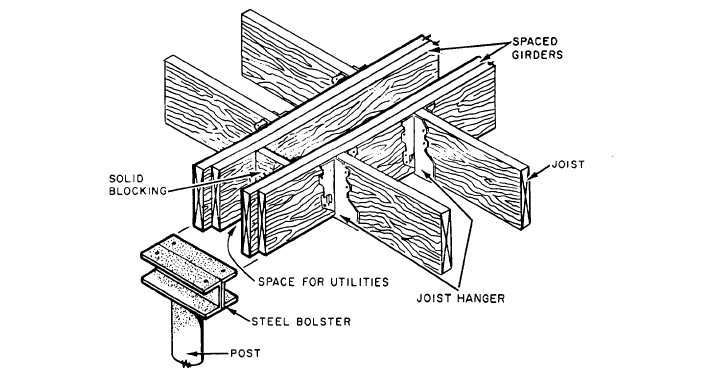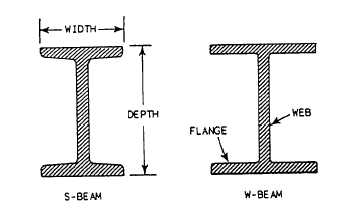Figure 1-14.—Spaced wood girders.
joints between the planks are staggered. In framing, a
built-up girder is placed so that the joints on the outside
of the girder fall directly over a post. Three 16-penny
(16d) nails are driven at the ends of the planks, and other
nails are staggered 32 inches OC. As shown in figure
1-13, the top of the girder is flush with the top sill plate.
When space is required for heat ducts in a partition
supported on a girder, a spaced wood girder, such as that
shown in figure 1-14, is sometimes necessary. Solid
blocking is used at intervals between the two members.
A single-post support for a spaced girder usually
requires a bolster, preferably metal, with a sufficient
span to support the two members.
The ends of a girder often rest in pockets prepared
in a concrete wall (fig. 1-13). Here, the girder ends must
bear at least 4 inches on the wall, and the pocket should
be large enough to provide a 1/2-inch air space around
the sides and end of the girder. To protect against
termites, treat the ends of the girder with a preservative.
As a further precaution, line the pockets with metal.
Steel
S-beams (standard) or W-beams (wide flange), both
shown in figure 1-15, are most often used as girders in
wood-framed construction. Whether the beam is wood
or steel, make sure it aligns from end to end and side to
side. Also make sure the length of the bearing post under
the girder is correct to ensure the girder is properly
supported.
PLACING POSTS AND GIRDERS
Posts must be cut to length and set up before the
girders can be installed. The upper surface of the girder
may be in line with the foundation plate sill, or the girder
ends may rest on top of the walls. Long girders must be
Figure 1-15—Types of steel beams.
1-7



